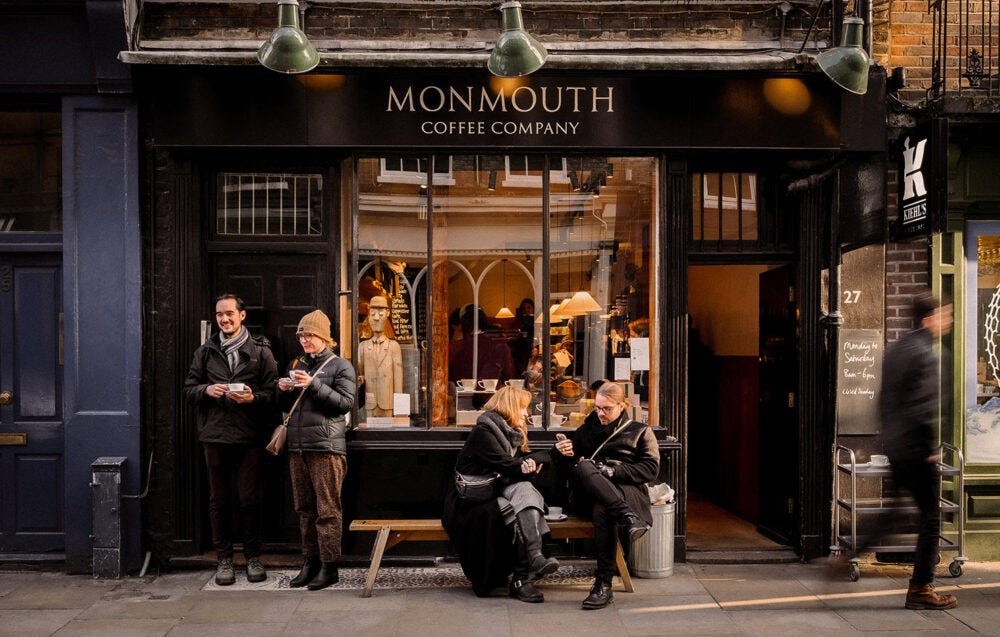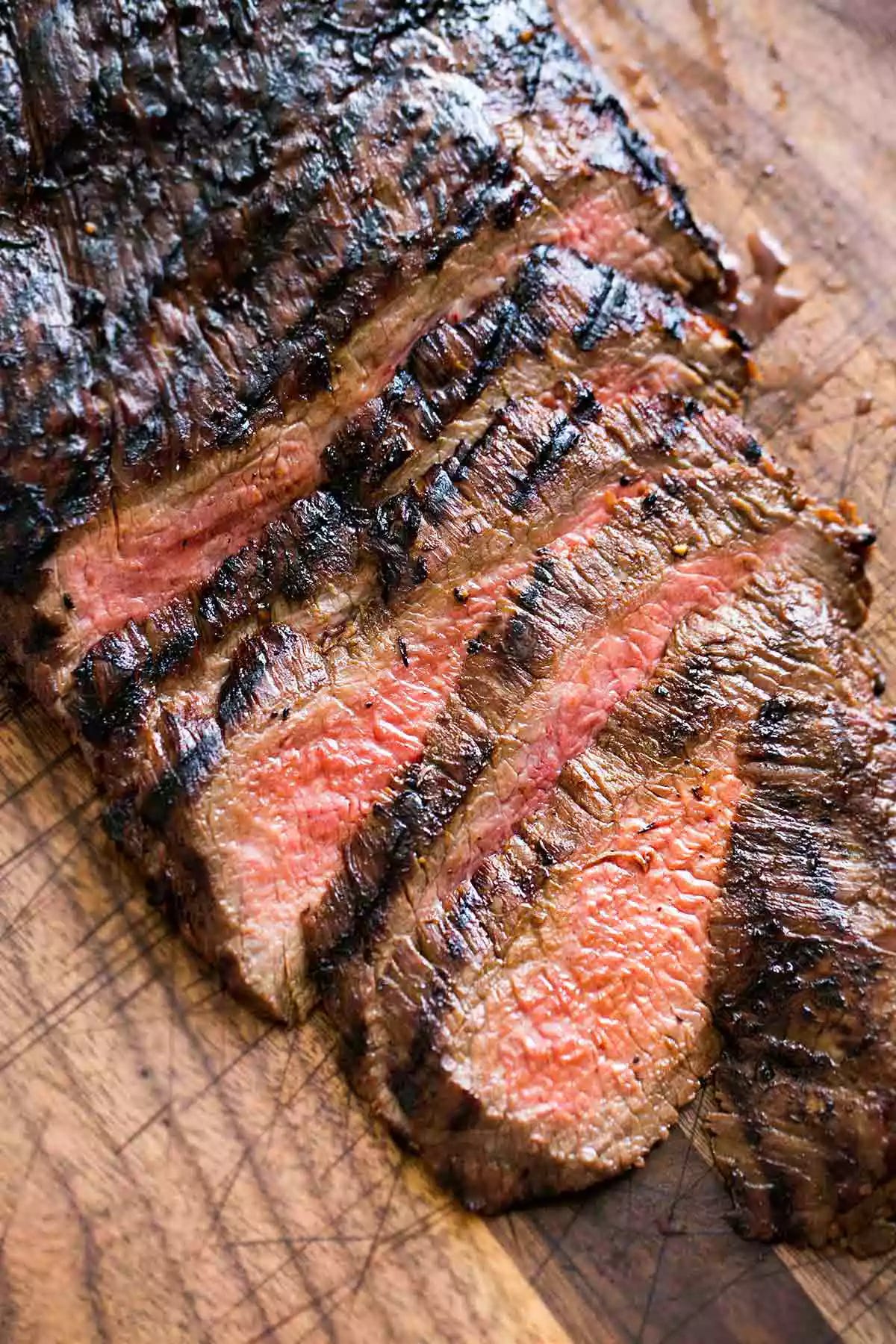Backpacking through China just before Covid, I left Beijing to travel north then west to loop slowly down to Hong Kong. Three days out of the capital, I realised I must be addicted to coffee. Once into the tea-exclusive countryside, my morning cup of ‘joe’ became unavailable. A migraine sufferer, all I could do to keep one at bay was to chug a daily can of Red Bull as soon as I woke up. It is possibly the worst drink there is and certainly so at breakfast; but its excessive quantity of caffeine dispatched my hovering migraine aura.
Ethiopia’s nomadic Galla tribe discovered caffeine’s power some time before 1000 AD when they realised that their daily ration of a certain berry, ground up and moulded into a ball with animal fat, was giving them an energy charge. What they were chewing was the raw coffee bean.

Ethiopians take coffee seriously. Their finest cultivated beans are grown on the mountains near Harari. Fresh green beans are roasted in domestic kitchens on an open flame so that expectant drinkers can relish the smell. Once the beans are ground, they are brewed in a jebena, a glazed clay pot sometimes set on a tray covered with fresh-cut grass, incense burning in a holder. The coffee is poured into tiny cups then served with the traditional basket of popcorn.

Posted to Moscow, I knew I would not survive life in the coffee-free USSR without my morning cup. At London’s Monmouth Coffee Company, I bought a sack of enough green beans for a four-year supply and a manual coffee roaster from the Algerian coffee store on Old Compton Street. Both went into the back of the truck travelling overland, stuffed to the roof with our flat-pack furniture. At the border with Poland, Soviet customs officials opened the truck onto the catering can of powdered instant coffee I had pressed into it, last minute, as a possible drink for emergencies (though not mine). They confiscated it for their own use. Oblivious to the sack hidden at the back of the load, they informed the driver he was lucky. Had there been any proper coffee on board the truck, he would have been fined $100 per pound in weight. That sack contained 154 pounds of raw beans.
Each week when I roasted my beans, our foreigners’ compound would fill with their scented smoke and the corridor outside my apartment with ex-pats begging to trade a fistful for whatever treasures they could offer to tempt me to give some up.
Early Arab traders travelling through the Horn of Africa were similarly smitten. They returned home with supplies of the bean which they made into a boiled drink they called qahwa, 'sleep preventer'. By the 15th century, coffee was being roasted and ground across the Ottoman Empire, appreciated among Muslims as an alternative to alcohol. A woman in Egypt and Turkey had the right to a divorce if her husband did not allow her a daily supply of coffee. One century later, coffee drinking had spread across Europe, in London preceding tea as the fashionable accompaniment to political and intellectual discourse in the capital’s new men-only coffee houses.
You may be an aficionado of coffee, choosing carefully between single-origin coffees from your local barista. But the most common coffee comes in only two varieties: Robusta and Arabica, grown in eleven countries across Africa, to Indonesia, Brazil, India, and Sri Lanka, where it was the island’s prime crop before being destroyed by blight and supplanted by tea.
Robusta, the most easily grown, is cultivated primarily in Central and West Africa on a low altitude bush. It accounts for 75 per cent of the world's coffee, used as the base for speciality coffee blends, and in canned and instant coffee. Arabica is a superior bean with more flavour, grown at high altitudes in East Africa, Indonesia, and South America.
Robusta beans contain more caffeine than Arabica. An espresso, you may be surprised to know, contains less caffeine than a cup of regular coffee. In the USA, the coffee with the highest caffeine content is the insipid convenience store ‘coffee-to-go’ brewed at 7-Elevens, deliberately designed to keep workers awake.
Decaffeinated coffee, first available in Germany in 1906, is not totally caffeine-free. Predominantly brewed from robusta beans, a typical cup of decaf coffee contains 2 or 3mg of caffeine, compared to a typical cup of regular coffee, which has about 95mg of caffeine. I’ve never quite understood the thinking behind decaf. It seems to me the equivalent of going to bed with Bradley Cooper and keeping your knickers on: what’s the point? (This clip is a double-espresso watch…)
Most recently, single-origin coffee has become A Thing among the uber-hip. Considered superior in quality to regular coffee created from a blend of beans from a variety of sources, single-origin coffee is free of the pesticides, mycotoxins and other chemicals generally involved in the growth of beans from different regions, climates and altitudes. Enthusiasts and informed consumers relish being able to identify the individual characteristics of a particular bean traced from bush to cup, happy to pay a price more than half the cost of a glass of good wine, some of which will go back to the grower.
The origin of the name ‘joe’ is most likely a merging of ‘java’ with ‘mocha’ to create ‘jamoke’ which became shortened to ‘joe’, first mentioned in an American military officer’s manual of 1931.
If you’re going to be your own barista, there are as many opinions about how best to store coffee as there are about which beans make the finest drink. Some coffee specialists recommend storing beans in the freezer and bringing the single quantity you want to use back to room temperature before grinding it, to allow the release of its oils. However, pre-ground coffee should not be frozen or it scorches when used. Other coffee experts maintain freezing causes the water vapour on the beans to crystalize and compromise its flavour. They recommend storing beans instead in an air-tight container. Others again go for both, storing beans in an airtight, moisture-proof container in the freezer. But everyone seems to agree that for the perfect cup, you should
Buy beans, not ready-ground coffee, and only in the quantity you will use in a week
Only grind as many beans as you will use immediately
Only make as much coffee as you are able to drink in 20 minutes
Now that we’re in barbecue season, consider finely ground coffee as a rub for grilled flank or skirt steak. Just combine all the following ingredients together well. The rub will keep in an airtight container for up to 6 months. Rub 3 or 4 tablespoons all over the meat, leave to absorb for around an hour at room temperature then grill, either on a barbecue or in a dry and very hot pan. Leave to rest then slice thickly across the grain and serve with whole-grain Dijon mustard or sour cream flavoured with a hearty dollop of horseradish and a green salad.
1kg/2lb flank or skirt steak
2 tablespoons finely ground coffee
1 small shallot, peeled and finely grated
1 or 2 large cloves of garlic, peeled and finely grated
2 tablespoons brown sugar
1 tablespoon coarse kosher salt
½-1 tablespoon chilli powder, according to taste
½ tablespoon paprika
½ tablespoon freshly ground black pepper
½ teaspoon cayenne pepper
½ teaspoon cocoa powder








Thank you for a super interesting read! I’m coffee obsessed - recently devoured James Hoffman’s World Atlas of Coffee which I’d highly recommend. I used to not ‘see the point’ in decaf coffee either, until I learned that during pregnancy, caffeine’s metabolite, paraxanthine, crosses the placenta and can cause babies to be born small for age (similar to alcohol and smoking during pregnancy) which persists later in life, causing children not to reach their full growth potential in adulthood. This obviously has knock on effects for brain development etc (I work in nutrition research). When I learned this, I was grateful that good decaf coffee exists, and can be quite delicious, even. Thought you might find this as interesting as I did!
The mention of Bradley Cooper is leading me to think about perfect pairings--- coffee with brownies or cheesecake, coffee with martini or whisky, coffee with chilli or tomato sauce?